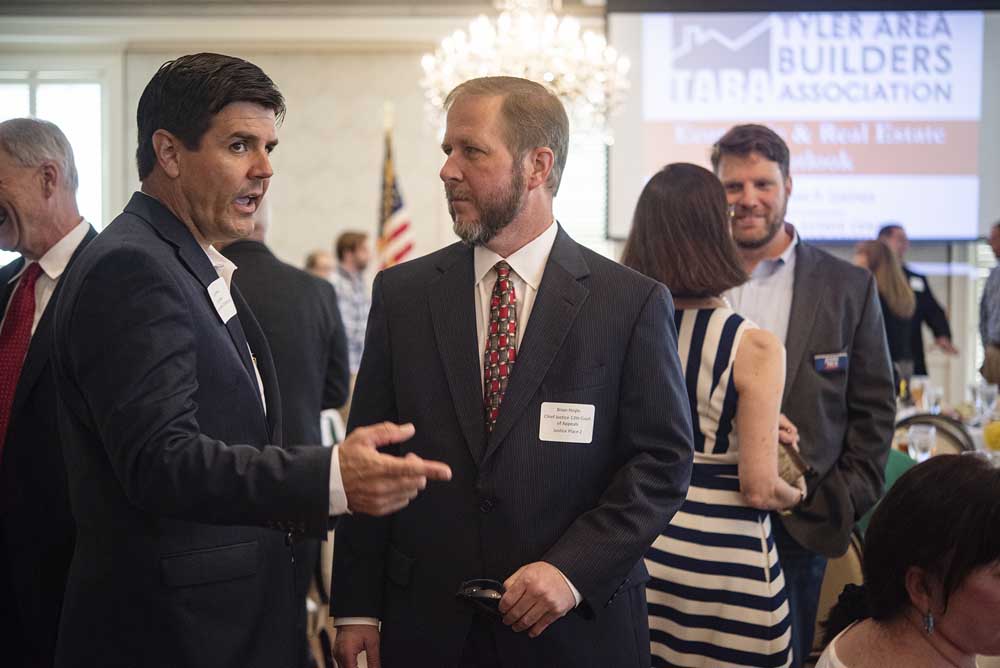Gap between incomes, home prices is critical issue facing Texas housing market, economist says
Published 4:15 pm Wednesday, August 28, 2019

- State Rep. Cole Hefner and Brian Hoyle, chief justice 12th Court of Appeals, talk before the start of the Tyler Area Builders Association Government Officials Appreciation Luncheon held at Willow Brook Country Club on Wednesday, Aug. 28, 2019. (Sarah A. Miller/Tyler Morning Telegraph)
Affordability is a key part of the housing market right now because household incomes are not rising as quickly as home prices.
That’s what economist James P. Gaines from the Texas A&M Real Estate Center told a gathering of government officials and the Tyler Area Builders Association at Willow Brook Country Club on Wednesday.
Gaines pointed to a chart showing the rise in median household income and the rise in home prices since 1989, and a steep rise in home prices in the past few years relative to household incomes.
“That’s the issue of affordability, and affordability now is one of our more critical issues — probably in the top four or five issues that the state really faces is housing affordability,” he said.
“Our incomes are lower in Texas than the national levels,” he said. “House prices relative to those incomes is getting higher, and the further that spread gets, the bigger this separation between the red line and the blue line, then the more and more (important) the affordability issue becomes.”
Gaines said the affordability of homes starts with the price of the empty lot. He said a home usually sells for five to six times what the lot costs. That means a $50,000 lot would likely yield a $300,000 home, he said.
“So can you get a $50,000 lot?” Gaines asked. “That’s the problem.”
He said it might be possible for builders to find cheaper lots outside of city limits in unincorporated areas of Smith County. He said cities usually charge for a permit, but counties will let you build on unincorporated land without a permit.
He said homes are affordable when prices are between 3.2 and 3.8 times a household’s income, but unaffordable when they get upward of four times a household’s income. During the years leading up to the Great Recession, people were being sold unaffordable homes.
“People in some communities were paying as much as 15 times their income to buy a house,” Gaines said. “It doesn’t work. I mean, it doesn’t take a genius to figure that one out. I don’t care how exotic, erotic or anything else the financing is. That doesn’t work.”
Gaines said the Real Estate Center is projecting a 5% downturn in single-family homebuilding in part because of the lack of availability of affordable retail lots. He said data from building permits show this trend is coming true.
On building permits in Tyler, he said, “I don’t think they were that strong, but I don’t think they were that weak either.”
TWITTER and INSTAGRAM: @_erinmansfield







